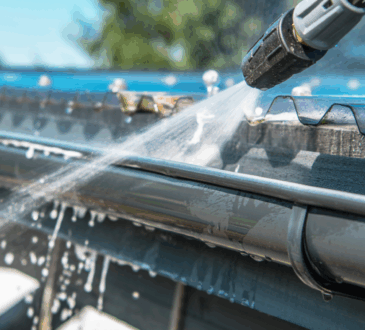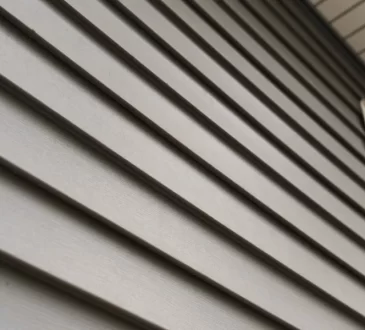
If a strong wind has blown a plank of wood through your roof, you may need to repair it. Patching may also be required if an old tv antenna or vent was removed. No matter the source of the roof damage, it is imperative that the repairs be completed before the onset of wet weather. If you know the basics of carpentry, you can fix a roof leak. This article will teach you the methods in detail.
How to Find the Damaged Area
Finding the damaged areas on the roof is the first step in deciding where to apply the repairs. To start find an professional local roofer near me. If your structures or ceiling are damp, or if you hear a dripping sound, you may have a leak, but it may take some investigation to pinpoint exactly where the water is coming from. Since this is the case, it is necessary to zero in on a potential site of damage.
Start by inspecting your attic for signs of water damage like a leaking roof or wet spots. Check for damaged or missing shingles from the outside of your home, and keep an eye out for any penetrations like chimneys, skylights, and vents. If you’re having trouble locating the source of a leak in your roof, try spraying different areas of your roof with a hose. If you’re not sure if the section of roof you’re watering is the dented one, have a helper check for dripping from the interior of the house.
Materials Needed to Patch Roofs
Fallen tree limbs, rotten wood from years of use, or even just the persistence of pesky animals can all lead to the deterioration and eventual collapse of your roof. It could also be an outdated roof penetration that needs to be removed. Repairing a roof hole or other damage can involve a number of different procedures, some of which are condition-specific.
- Tools: a stepladder, pry bar, and saw
- Tape measure
- Sheets of plywood
- A piece of wood measuring 2 by 4 inches
- Nails and a hammer for the roof
- Drill/driver combo for heavy-duty screws, as well as deck screws
- Tar used for roofs
- In the form of tar paper
- Adhesive used for roofing
How To Patch Roofs1. Step 1
Get up on top of your house. As was previously mentioned, going up on your roof is an extremely risky endeavour, and you must always dress appropriately for the task at hand. Prior to ascending, double check that your ladder is safely fastened.
2. Step 2
Take off the nails and shingles covering the damaged section of your roof. Pry up the shingles over the damaged area with a pry bar.
3. Step 3
In order to replace the damaged shingles, pry them up slightly above the damaged tissue. In the event that the hole in your roof’s plywood is not perfectly square or rectangular, you can use a reciprocating saw to create a new square or rectangle around the opening. Cut the wood out.
4. Step 4
Set up a 2-by-4 board beneath the opening; its width must be three times that of the hole. The plywood will need to be cut to fit the opening precisely. Verify that the thickness of the plywood you purchase is equivalent to that of your current roof. Follow this by replacing the damaged plywood with the new piece. Roof tar the exposed wood around the plywood’s edges and over the bracing screws.
5. Step 5
After replacing the missing shingles, place tar paper on the area, making sure the paper’s upper edge is tucked under the shingle flaps above the patched area. Attach the tar paper to the outside walls at intervals of 12 to 18 inches. Nail down any intersecting tar paper as well if you used one or more sheets.
6. Step 6
Install the new roofing materials, beginning with the row at the bottom. Use roofing adhesive to cover each nail and use three roofing nails to secure each shingle along the horizontal centerline. Apply force on the raised shingles until they are sitting on the pinnacle of your fresh shingles, then wrap the top new roofing underneath the roof you lifted up earlier.
One typical roofing maintenance task is fixing leaks. There is still a great deal of caution and safety measures that must be taken; avoid injury and further harm to your roof at all costs. You could try to repair it yourself if you have experience with roofing. However, a professional roofer should be called in if you are unable to safely access your roof, if you suspect extensive harm on your roof that is not immediately apparent, or if you are unable to locate the damaged section on your roof.




